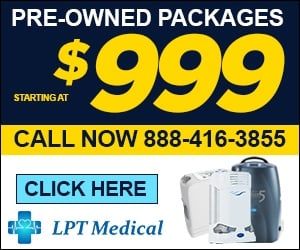
Personal hygiene is one of those things that everyone knows is important, but few actually take seriously enough. For most people, hygiene is simply a routine part of life, not something they go out of their way to think about pay attention to.
But if you suffer from COPD, it's important to make good personal hygiene a top priority in your daily routine. Proper hygiene is your very first line of defense against illnesses and dangerous COPD exacerbations that can make your disease even worse.

LPT Medical's newest and most impressive portable oxygen concentrator, the ARYA P5 portable oxygen concentrator
However, practicing good personal hygiene takes more effort than most people think. Doing it right takes extra time out of the busy day, and it's very tempting to cut corners to save time.
That's why everyone should take the time to review the important components of good personal hygiene now and then. If you have COPD, then you have even more at stake, and you should take extra care to learn all the proper techniques.
In this post, we're going to show you what good personal hygiene looks like and how it can help you protect your lungs and manage your COPD. This guide will discuss a variety of important hygiene issues, both general and COPD-specific, and help you learn the skills you need implement good hygiene practices in your everyday life.
Why Hygiene is So Important for People with COPD
Most people understand the basics of good hygiene, but not everyone is great at practicing it consistently. Even so, imperfect hygiene is not usually a problem for most healthy adults.
However, good personal hygiene is much more important for people who suffer from COPD. The disease suppresses patients' immune systems, which makes them particularly vulnerable to disease-causing germs like viruses and bacteria.
Even worse, it can be very dangerous to get even a little bit sick if you have COPD. Respiratory illnesses, in particular, can wreak havoc on your lungs and immune system, making it much more difficult to breathe and control other COPD symptoms.

That's why practicing good hygiene is so vital; it protects you from the germs, bacteria, funguses, and respiratory irritants that cause you to get ill. You can't always control whether or not you get sick, but practicing good personal hygiene is one of the few effective things you can do to reduce your risk.
Even minor viruses like the common cold can worsen breathing problems significantly and permanently damage your lungs. Because of blockages and narrowing in your airways, COPD also makes it harder to flush viruses and bacteria out of your respiratory tract.
This significantly raises your risk for secondary lung infections like pneumonia if you get sick. COPD also makes it more difficult to recover from illnesses and infections.
In this way, COPD not only causes you to get sick more often, but also causes you to stay sick for a longer period of time. Unfortunately, one of the consequences of staying sick longer is an increased probability of minor illnesses causing serious infections and permanent damage to your lungs.
In the most serious cases, getting sick when you have COPD can lead to respiratory failure, hospitalization, and even death. That is why it is so important to practice impeccable hygiene if you suffer from COPD.
The Benefits of Good Hygiene
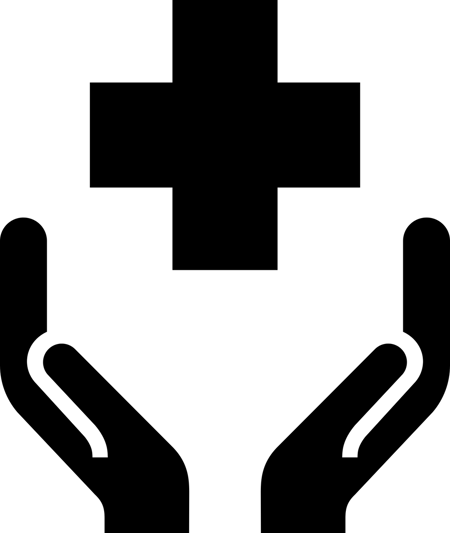
The main benefit of good hygiene is a significantly reduced chance of getting sick. That's because, when you practice good hygiene, you prevent a myriad of disease-causing pathogens like viruses, bacteria, and parasites from making it into your body.
Good personal hygiene is also good for those around you because it prevents you from spreading germs and sicknesses to other people. By practicing good hygiene, you can help protect other people with immune-suppressing diseases like COPD and prevent them from getting illnesses that could potentially threaten their lives.
Along with these physical benefits of good hygiene, there are social and psychological benefits as well. When you keep yourself clean, healthy, and groomed, you are likely to feel more confident and capable in other ways, as well.
Here are some of the main benefits of healthy hygiene habits:
- Improved overall health
- Reduced risk of disease and infections
- Reduced exposure to allergens and other respiratory irritants
- Reduced risk of COPD exacerbations
- Reduced risk of hospitalization
- Reduced risk of spreading germs and illnesses to others
- A cleaner, healthier living environment
- Improved confidence, self-image, and self-esteem
- Other people see you as more healthy, desirable, and attractive when you have good hygiene
What Does Good Personal Hygiene Look Like?
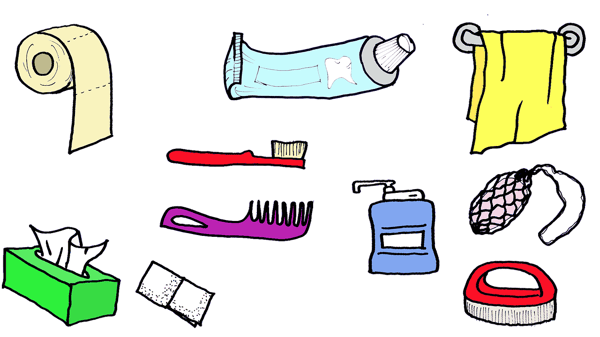
You probably already know the basics of good hygiene like bathing and washing your hands. But there's also a good chance you don't know, or have forgotten, the details of what good hygiene entails.
Still, knowing the basics works well enough for most people most of the time. At worst, most healthy adults will only get a mild illness every so often if they expose themselves to germs.
However, living with COPD means you can't cut any corners without putting your health in serious risk. That means you need to go out of your way to practice impeccable hygiene, even if you've gotten away with an average amount of effort so far in your life.
But to do that, you need to understand what good hygiene is and exactly what you have to do to practice it. Fortunately, practicing good hygiene is relatively easy to do and even simpler to learn.
The basics of good personal hygiene include:
- Knowing when to wash your hands
- Knowing how to wash your hands properly
- Knowing how to prevent yourself from spreading germs to others when you are sick
- Knowing how to avoid transferring germs to your body in public places
- Knowing how to practice good dental hygiene
- Knowing how to clean your body and your clothes to prevent germ buildup
How to Practice Good Hygiene to Improve Your COPD
In this guide, we're going to give you a refresher course on how to practice good personal hygiene. We'll also address a variety of personal hygiene issues and challenges that affect people with COPD specifically.
In these next sections, we will go through each important hygiene issue step by step so you can learn the proper techniques. We'll also give you tips for how to practice good hygiene every day and fit important hygiene practices into your daily routine.
Learning the tips and techniques we explain in this guide will help you ensure that you are doing everything you can to protect yourself from sickness and disease. That way, you can live your life more safely, more confidently, and with a reduced risk of serious COPD complications.
Wash Your Hands Often
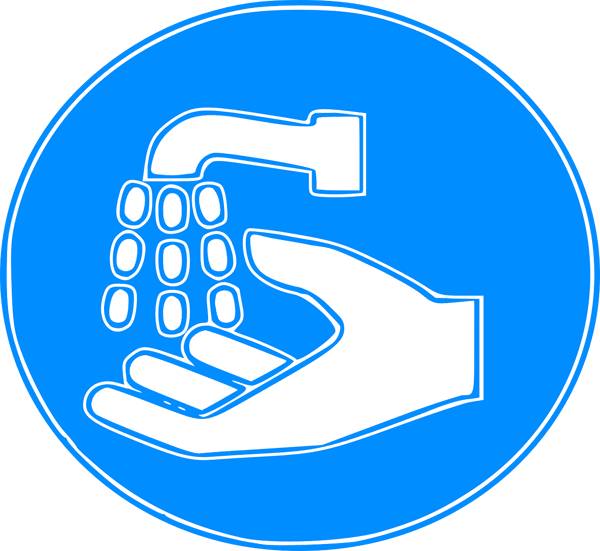
Even though washing your hands might seem like obvious advice, it is so essential to personal hygiene that it's still important to review. It is the first step to practicing good hygiene and one of the most effective ways you can protect yourself from disease.
Unfortunately, most people are not as diligent about hand-washing as they should be, even knowing how important it is. Many people remember to wash their hands before eating or going to the bathroom, but get lazy or forget to do it in other situations.
Another problem is that most people don't take enough time to wash their hands thoroughly enough, which makes their hand-washing less effective. As a result, their hands may still harbor harmful bacteria even after washing up.
How to Wash Your Hands the Right Way
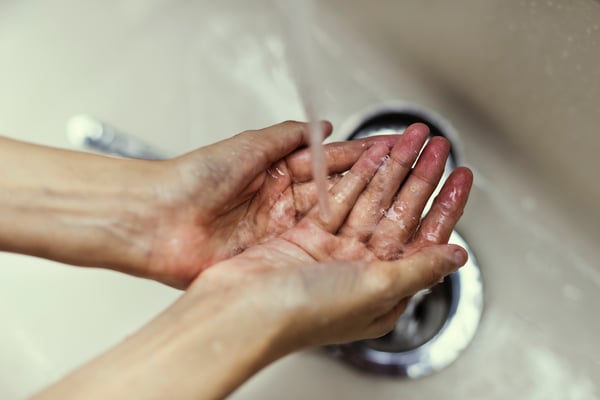
If all you do is rub your hands together with soap while giving them a quick rinse under the faucet, then you're not washing them well enough. In fact, if it takes you less than a full twenty to thirty seconds (count it!), then you probably need to correct your technique.
Here is a quick overview of proper hand-washing technique, as recommended by the CDC:
- Use clean, running water to rinse and wet your hands before applying soap.
- Rub the soap between your hands until it forms a lather.
- Scrub your hands for at least twenty seconds, getting your nails, wrists, and between your fingers.
- Rinse off all the soap under clean, running water.
- Dry your hands off on a clean towel.
To wash your hands properly, you need to make sure you scrub every part of your hands thoroughly with soap, including your fingers, fingernails, palms, wrists, between your fingers, and the backs of your hands. Any kind of regular, non-antibacterial soap will do the trick, including bar soap, liquid soap, and foaming soaps.
You may need to wash the skin above your wrists and further up your forearms after cleaning, washing dishes, or doing anything else that is likely to fling bacteria around. If your hands are especially dirty, you should also use a nail brush to scrub around and underneath your fingernails to remove excess dirt and grime.
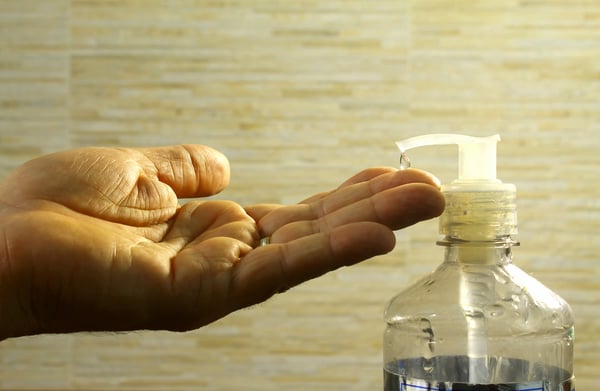
Here are some more tips for more effective and hygienic hand washing:
- Avoid antibacterial soaps and hand sanitizers: Using antibacterial soaps and hand sanitizer is almost never necessary because regular soaps and sanitizers are effective. Additionally, anti-bacterial soaps are bad for the environment, and may even be bad for your health.
- Keep your hand towels clean and dry: If your hand towel stays moist for too long, it creates a perfect environment for mold and bacteria to grow. Let your hand towels dry thoroughly between uses and wash them regularly, especially if you notice a bad or musty smell.
- Don't re-contaminate your hands: After you get your hands all clean, you don't want to have to start over again. That's why you should be careful not re-contaminate them right away by touching a dirty faucet or door handle on your way out of the bathroom. When using a public bathroom, cover your hand with a tissue if necessary to avoid touching dirty public surfaces.
To see proper hand-washing technique in action, check out this video from the CDC.
When to Wash Your Hands
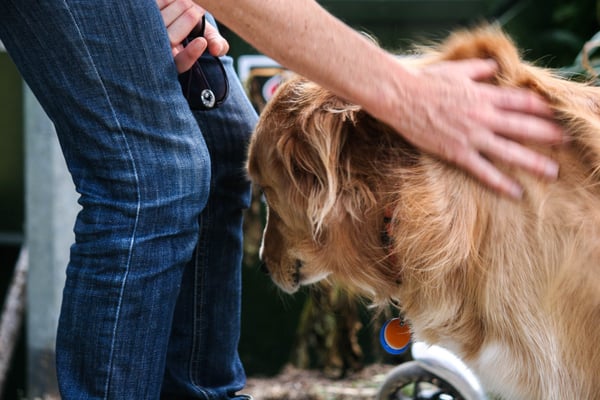
You probably already know that you should wash your hands before and after eating and after you use the bathroom. However, there are many other situations that call for thorough hand-washing, and some are less obvious than others.
In general, you should wash your hands after completing any activity that puts you in contact with germs. That includes anything that involves handling dirty items, touching public surfaces, or coming into contact with someone who is sick or injured.
Here is a more complete list of situations in which you should wash your hands:
- Before and after handling food
- Before and after eating
- Before and after treating a wound
- Before and after touching your face, especially your eyes, nose, and mouth
- Before and after caring for a sick person
- After sneezing, coughing, or blowing your nose
- After using the bathroom
- After changing a diaper or handling pet waste
- After touching a pet or other animal
- After touching another person
- After handling garbage or waste
- After touching a public item or surface (like a public pen or ATM)
- After smoking
Use Hand Sanitizer
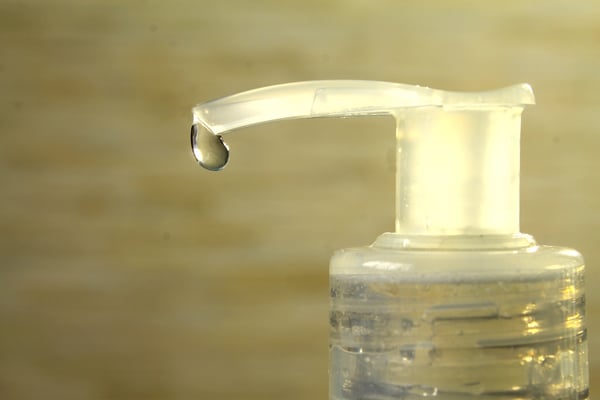
Sometimes, you won't have access to a sink when you need to wash your hands. In case this happens, it's a good idea to keep hand sanitizer with you whenever you leave the house.
For the best protection, you should always use alcohol-based hand sanitizers instead of antibacterial ones. To be effective, your hand sanitizer should contain no less than 60 percent alcohol.
These hand sanitizers can kill the majority of bacteria and fungi on your hands as well as many viruses. The higher percentage of alcohol the sanitizer contains, the more effective it will be against all kinds of microbes.
However, hand sanitizer only works effectively if you use it right. If your hands are greasy or grimy when you apply hand sanitizer or you wipe the solution off too soon, then you won't get its full protection.
But even though it can be good in a pinch, hand sanitizer is not a good substitute for hand-washing in all cases. Using hand sanitizer is not nearly as effective as washing your hands, and you should only use it as a backup for times when hand-washing is not an option.
Here are some tips for using hand sanitizer correctly to protect yourself from illnesses and infections:
- Use hand sanitizer by pouring a dime-sized dollop into the palm of your hand and rubbing the solution thoroughly into your palms, fingers, and the backs of your hands.
- Make sure you don't have dirt, oils, or grime on your hands before applying hand sanitizer, otherwise it may not be effective.
- Once the solution has been absorbed into your skin, let your hands air dry. (Don't wipe your hands off; it should only take a few seconds for the solution to dry on its own.)
- Do not rely on hand sanitizer to clean harmful chemicals like pesticides off your hands.
Bathe Often for Healthy Skin and Lungs
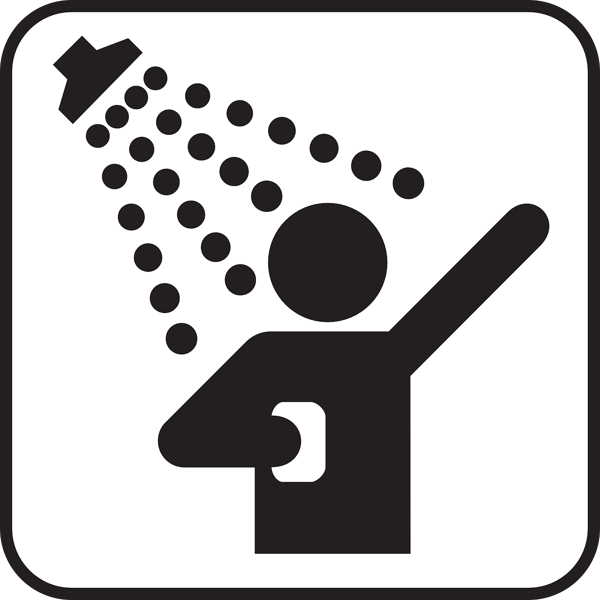
No matter how careful you are to avoid germs, your body inevitably picks plenty of them up from your environment throughout the day. When you go outside, cook, clean, and sweat, you are exposed to all sorts of bacteria, fungi, and other harmful particles that stick to your hair, clothes, and skin.
That's why washing your body is so important; it gets rid of harmful germs and other irritants that could make you sick. It also helps get rid of respiratory irritants like dust, pollen and mold that can make your COPD symptoms worse if you breathe them in.
Because of this, experts recommend bathing to wash your body at least twice a week, or more often if you get too dirty or sweaty. You should also wash your hair with shampoo or soap at least once per week.
Unfortunately, bathing can be difficult for many people with COPD, especially those whose disease is very advanced. Many patients experience such severe shortness of breath and limited mobility that washing their bodies and maneuvering in the shower is a challenge.
Bathing is even more of a hassle for COPD patients who need to use oxygen therapy 24/7 in order to breathe. For these and other reasons, many patients struggle to practice proper personal hygiene and bathe as often as they should.
Luckily, doctors, innovators, caregivers, and patients themselves have come up with a variety of different bathing solutions to help people with chronic diseases like COPD. Using these simple tools and techniques, you can make showering and bathing much more manageable while working within your physical and medical limitations.
How to Bathe while Using Oxygen

It can be extremely difficult to bathe while you're hooked up to an oxygen machine. You not only have to deal with an oxygen mask or nasal cannula attached to your face, but you also have to manage the extension tubing that runs out to your oxygen tank or concentrator.
Many patients struggle to work around the equipment, finding it difficult to wash their bodies while keeping their oxygen delivery equipment in place. It can be a challenge to move around in the cramped space of a tub or shower without snagging or yanking the tubing.
It's can also be difficult to run the tubing out of the shower to the oxygen device while also preventing water from escaping. If you use a portable oxygen concentrator, another potential problem is getting water or humid air in your equipment, which can damage both the electronics and the filters in your oxygen concentrator machine.

Luckily, if you learn the right techniques, you can shower on oxygen without too much trouble. After all, everyone who uses supplemental oxygen needs to bathe, and patients and caregivers have come up with a variety of practical solutions to make bathing more manageable and comfortable for oxygen patients.
Here are some tips for showering and bathing while using oxygen:
- Make sure you oxygen tubing that is long enough to allow you to move freely in the shower.
- If you are using a portable oxygen concentrator while you shower, make sure you keep it safely out of danger of getting wet or exposed to too humid air. Keep it outside of the bathroom when you shower and make sure your tubing is long enough to comfortably reach that far.
- Drape your extension tubing over the top of your shower door or shower rod to keep it out of the way and prevent it from dripping water in your bathroom.
- You can use a clip or another fastener to secure your nasal cannula or extension tubing to the top of your shower door or shower rod. Alternatively, you could secure your tubing to a hook inside or outside of your shower.
- If your doctor says it is safe and your oxygen levels do not drop too low, you can remove your nasal cannula or oxygen mask briefly to wash your face and hair.
How to Bathe if You Have COPD and Limited Mobility
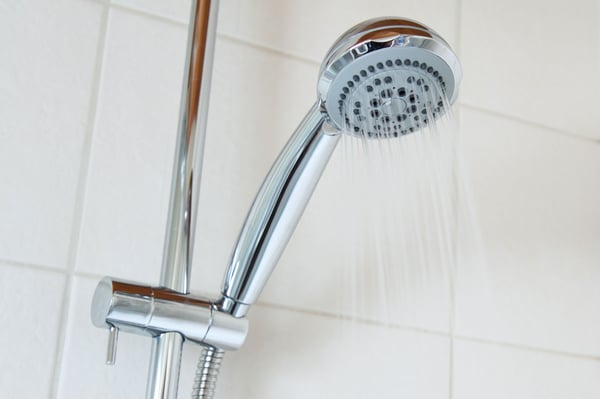
People with advanced COPD often struggle with limited mobility due to severe breathlessness, muscle weakness, and other COPD complications. Some patients even find it difficult to walk short distances or stand for long periods of time.
When this happens, bathing can become not only difficult, but also potentially dangerous. Severe physical limitations significantly increase your chance of having a fall or accident and makes it more likely that an accident will result in a serious injury.
What's more, the humid air in the shower can make it even more difficult to breathe if you suffer from COPD. That's why it's important to create a safe and accessible bathroom environment that won't aggravate your symptoms.
Luckily, there are a variety of tools available that you can use to aid you while you bathe. Perhaps the most useful is a bath stool or shower chair, which gives you the opportunity to sit down and rest while you wash yourself in the shower.

This helps you conserve energy, keep your balance, and significantly reduces your risk for slips and falls. Sitting down while you bathe can also reduce shortness of breath, which may get worse in the shower because of the humid air.
Here are some more shower aids and tips you can use to make it easier to bathe with COPD:
- Always open a window or turn on a vent fan to get rid of excess humidity when you shower.
- Check your shower and bathroom regularly for signs of mold. Mold releases spores that can irritate your lungs and worsen COPD when you breathe them in.
- Get a shower stool or chair so you have a safe and comfortable place to sit while you shower.
- If you struggle to keep your balance or struggle to get in and out of the tub, consider getting a handle or safety rail to help you move around more safely and confidently.
- Get a long-handled scrub brush or sponge so you don't have to strain or bend uncomfortably while you wash your body.
- Keep your shampoo, soap, and other bathing products on an easy-to-reach shelf or basket in your shower so you don't have to bend over to retrieve them.
- Get an anti-slip bath mat for extra safety and peace of mind in the shower.
- Make sure your bathroom is well-lit so you can see clearly and avoid accidents.
- To save energy, wear an absorbent, terry-cloth bathrobe after your shower and pat yourself dry instead of drying yourself with a towel.
- If you are not feeling well enough to bathe under running water, a sponge bath is perfectly acceptable.
Cover Your Mouth When You Cough or Sneeze
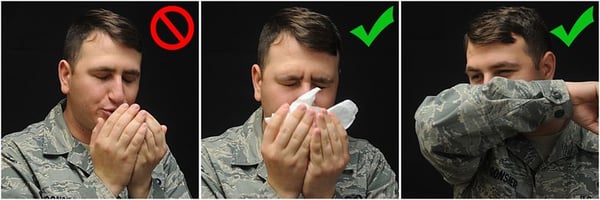
This one might seem very straightforward, but we promise we're not trying to insult your intelligence. You would probably be surprised at how many people don't know how to cover their mouths properly when they sneeze.
Too often, people use the palm of their hand to catch their coughs and sneezes. Unfortunately, this is the improper way to do it, and does little, if anything, to stop the spread of disease.
The point of covering your mouth is to prevent germ-filled droplets from your mouth from spreading to the people and objects around you. However, when you cough or sneeze in your hands, you will end up leaving your germs on every surface you touch.
You use your hands to do just about everything; turn doorknobs, hold things, shake hands, and touch public surfaces like counters and credit card machines. As a result, using your hand to cover your mouth makes it inevitable you will expose other people to your germs.
Instead, you should always use the crook of your elbow to cover your mouth when you cough or sneeze. Since you don't touch that part of your body with your hands often, you are much less likely to transfer those germs to other surfaces or people.
To keep yourself protected, you may need to ask other people around you to cover their mouths properly when they cough or sneeze. Most people won't take offense if you ask them politely and explain that you have a compromised immune system.
Avoid Germs in Public Places
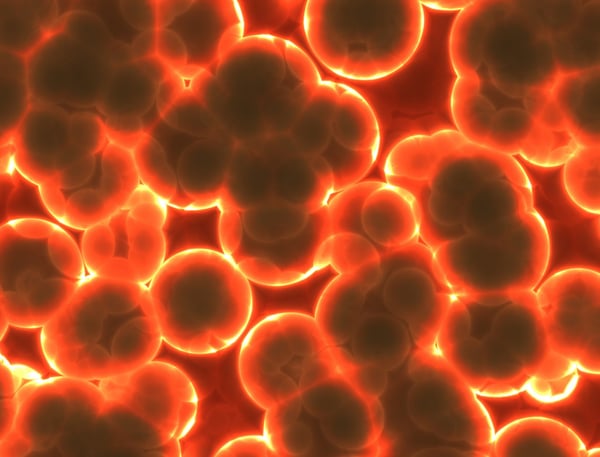
Everywhere you go, there are invisible germs lurking on doorknobs, counters, hand rests, and just about anything that comes into contact with other people. As a result, public places tend to be breeding grounds for all kinds of virus and bacteria-caused illnesses.
That doesn't mean you should be scared to go out in public, but it does mean that you should take extra caution. If you have COPD, it's especially important to build public hygiene habits that help you avoid exposing yourself to other people's germs.
Unfortunately, you just can't trust other people to be clean and responsible about their hygiene. The only thing you can rely on is yourself and your own personal hygiene habits to keep yourself from getting sick.
So to help you stay clean and healthy when you leave the house, let's take a look at some practical rules and techniques for good personal hygiene in public. If you follow these steps, you can minimize your exposure to germs in public places and significantly reduce your chances of getting sick.
Know Where Germs Tend to Hide

Some places, like public bathrooms and floors, are obvious places for bacteria and other harmful germs accumulate. However, there are a lot of different surfaces that are likely to be covered in germs, and not all of them are obvious.
The best way to identify the most hazardous surfaces is to think about which surfaces get touched the most. Consider how many people have passed through a public area and how often certain objects are likely to be touched.
Dirty surfaces like door handles and shopping carts may be obvious, but things like counters, grocery items, and coins are easy to overlook. In order to keep your body disease free, you need to be aware of all the most germ-ridden places you encounter on a regular basis.

That way, you will know what to avoid, when to be careful, and when it's most important to wash your hands. By being more aware, you can reduce the number of germs you inadvertently expose yourself to anytime you're in a public place.
Here are some of the most germ-heavy objects and surfaces to beware of:
- Handles, including door handles, coffee pot handles, shopping cart handles, and basket handles.
- Buttons including buttons on elevators, crosswalks, and on credit card and ATM machines
- Levers on soap and paper towel dispensers
- Public counters
- Public computers, mouses, and keyboards
- Public touch screens (e.g. screens on kiosks, tablet payment systems, etc.)
- Public pens and touchpad styluses
- Drinking fountains
- Coins and paper money
- Gas pump handles and buttons
- Gym equipment
- Public restrooms
- Menus at restaurants
- Handrails and arm rests
- Surfaces on public transportation
- Office break rooms
- Play surfaces in public parks and playgrounds
- Surfaces in schools and daycares
Always wash your hands thoroughly (following the steps we discussed in the section above) as soon as you can after you spend time in a public place. You should also wash your hands or use hand sanitizer as soon as possible after you touch any potentially dirty surfaces, especially before you eat and before you touch your face.
Avoid Crowds and Especially Busy Places

Crowds and high-traffic public areas can be a nightmare for anyone who has a weakened immune system, including people with COPD. When there's thousands, or even tens of thousands of people all mingling in the same place, you are much more likely to encounter disease-causing germs.
Crowded events and busy public places create perfect conditions for outbreaks of infectious illnesses like the cold and flu. That's why many experts recommend avoiding crowded places and events altogether if you suffer from an immune system-compromising disease.
If you go anyway, you need to take extra precautions to avoid exposing yourself to other people's germs. Make sure you have gotten your yearly flu vaccination and wash your hands as often as you can.
Here are some examples of crowded and high-traffic places that can pose a hazard for people with COPD:
- Large events like concerts, festivals, and sporting events
- Malls, shopping centers, and food courts during busy times
- Museums and amusement parks
- Public pools
- Schools, day cares, and universities
- Busy public transportation
- Doctor's offices and hospitals
- Public gyms and sporting equipment
Keep Your Hands Off Your Face!
Getting germs from public surfaces on your hands wouldn't be such a big deal if those germs just stayed put on your skin. However, the problem is that those germs can easily enter your body if you eat or touch your face with your dirty hands.
Viruses, bacteria, and other pathogens can infect you through any opening in your body, including your eyes, nose, and mouth. That's why it's so important to keep your hands away from your face to prevent yourself from getting sick.
Unfortunately, most people have the bad habit of rubbing their nose, eyes, and touching other parts of their face without even realizing it. This makes it very difficult to avoid transferring germs to your face when you're out in a public place.
That's why it's important to pay attention to your actions and get out of the habit of touching your face. If you can get out of the habit at home, you'll be less likely to get yourself sick in germy public places.
You can do this by reminding yourself often and making an effort to notice any time you feel yourself reaching up toward your face. Whenever you catch yourself doing it, interrupt the habit by making a conscious decision to keep your hands by your side.
If you do need to rub your nose or scratch an itch, try to use a tissue or the back of your hand, or, if you can, wash your hands first. If you can master this technique, you can significantly reduce your risk of getting sick both inside and outside your home.
Plan Ahead

Most people spend a lot of time in public places, and it can be difficult to remember personal hygiene rules like not touching your face. It can also be difficult in some places to locate or access things that you need, such as a sink to wash your hands after touching a public surface.
That's why it's a good idea to think ahead before you go out in public, especially during cold and flu season. Wherever you go, take a moment to consider how you can avoid touching dirty objects and where you can find a sink to clean your hands.
Here are some items you can use to be better prepared in public places:
- Hand sanitizer: use any time you cannot wash your hands
- Sanitizing wipes: use to clean dirty objects that you need to contact for more than just a moment
- Tissues: use to create a barrier between your hand and dirty objects or surfaces
- A pen: use instead of public pens to sign receipts, sign-in sheets, and other documents
You should bring some hand sanitizer with you whenever you go somewhere where you have to touch a lot of public surfaces. That way, you can keep your hands clean even when you don't have a chance to wash them properly in a sink.
You should also plan ahead before going anywhere that is more likely to be full of germs, such as hospitals, schools, and crowded events. Remind yourself to keep your hands away from your face and bring along tools, like tissues and hand sanitizer, that can help you keep your hands clean.
You may also want to keep a small container of sanitizing wipes with you when you go to certain public places. Thy can come in handy for wiping down dirty surfaces you are going to use, like a table, shopping cart handle, or public phone.
Another thing you can do is use a tissue or another part of your body to touch objects like door handles and elevator buttons. That way, the germs won't get on your hands where they are most likely to get transferred to your eyes, nose, or mouth.
Be Particularly Careful at the Doctor's Office

If you have COPD, then you will spend more time visiting hospitals and doctor's offices than the average person, and it pays to be prepared. While medical offices and hospitals try their best to keep everything sanitized, you may still face a higher risk of getting infected by bacteria and airborne illnesses from other patients.
In general, medical facilities are safe, but they still call for some extra caution. Whenever you visit your doctor or spend any time in a hospital, try to be especially careful to avoid direct contact with anything other sick patients might have touched.
In general, keep your hands off of surfaces in the waiting room and try to distance yourself from other patients who seem visibly sick. You may even want to bring your own pen use when you sign yourself in for your appointment, that way you never have to touch their public pens.
Practice Good Oral Hygiene

It might seem surprising, but studies show that your dental and oral hygiene can actually affect your COPD. In fact, poor dental health can worsen your breathing problems, cause you to get more infections, and increase the frequency of COPD exacerbations.
When you don't brush your teeth, bacteria and fungus have a chance multiply to harmful levels in your mouth. This can cause oral fungal infections, gum disease, and even lung infections if the bacteria from your mouth makes it into your lungs when you breathe.
Unfortunately, many COPD patients have poor dental health that causes unpleasant symptoms and a reduced quality of life. This is common in part because of the older age of most people with COPD as well as mobility issues that make it difficult for patients to go to the dentist and keep up with basic hygiene responsibilities.
Many people with COPD also frequently experience a dry mouth, which can make you more prone to oral diseases, infections, and tooth decay. Often, this results from taking certain COPD medications and treatments for which dry mouth is a common side effect, including inhaled corticosteroid medications and supplemental oxygen therapy.
Because of this, it's important for COPD patients to take extra special care of their teeth and their overall oral health. That means treating dry mouth symptoms and practicing good dental hygiene every day.
How to Brush and Floss Correctly
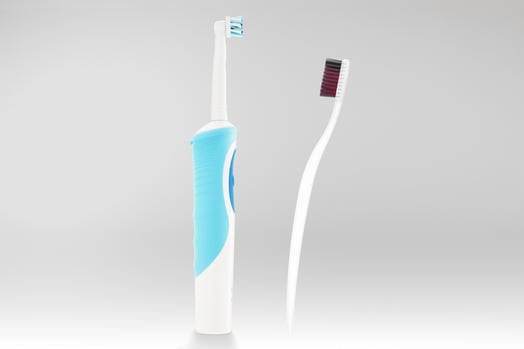
The cornerstone of good dental health is brushing and flossing your teeth every day. It doesn't take much time, but it's easy to forget if it's not already part of your routine.
In general, you should always brush your teeth at least twice per day, once in the morning and once before bed. You can use a regular toothbrush (preferably the soft-bristled kind) or an electric toothbrush and a toothpaste that contains fluoride.
You should spend a solid two minutes brushing at a minimum, making sure you scrub your tongue and all the different sides and surfaces of every tooth in your mouth. For proper technique, position the top of the bristles at your gum line and alternate between brushing back and forth and brushing with circular motions.
After you are done brushing, make sure you rinse off your toothbrush in clean, running water and place it somewhere it can air dry effectively. If your toothbrush doesn't dry out in between uses, it could harbor harmful bacteria and fungi that will get transferred to your mouth when you brush.
You also need to make sure you replace your toothbrush at least once every three months. You may need to replace it sooner if the bristles get too worn down, splayed out, or misshapen.
The second major part of good dental hygiene is flossing, which you should do once every single day. This might seem difficult to do if it's not already part of your daily routine, but the sooner you start, the sooner it will become habit and the better your oral health will be.

You can use traditional floss string or the plastic, pre-strung flossing tools if you prefer. Make sure to floss between every tooth, while gently moving the floss up and down to scrape off plaque and debris.
As you floss, target each side of every tooth by curving the floss around the shape of the tooth. Make sure to floss your gum line, too, by sliding the floss carefully into the space between your tooth and gums.
Finally, mouthwash is another tool you an use to keep your mouth extra healthy and clean. Talk to your doctor or dentist to see what kind of mouthwash they recommend for your oral health.
How to Change Your Diet to Improve Oral Health

Most people don't realize that their diet can have a significant impact on their oral health. Certain foods can strengthen your teeth and discourage bacteria growth, while other foods can weaken your teeth and make your mouth more hospitable to germs.
For instance, foods high in sugar can increase your chances of tooth decay because the sugar feeds the bacteria that form plaque on your teeth. Acidic foods can also hurt your dental health by softening tooth enamel and making your teeth more vulnerable to decay.
On the other hand, drinking water instead of carbonated drinks can help your mouth maintain its natural environment and pH, which helps keep your teeth healthy and strong. Studies also show that foods high in calcium and protein help keep your tooth enamel intact.
Research also shows that foods which require a lot of chewing, like cheese, leafy greens, and crunchy vegetables, helps your mouth keep a healthy pH. Pro-biotics like yogurt can also improve your dental health by cultivating healthy bacteria and keeping the more harmful types of bacteria in check.
Here are some more tips for choosing a diet that is good for your dental health:
- Limit the amount of sugary foods and drinks in your diet
- Avoid acidic drinks like fruit juices, carbonated beverages, and soda
- Eat more of your food with meals rather than snacking in-between
- When you snack, choose healthy foods instead of sugary sweets and treats
- It is better to eat sugar on one single occasion rather than consuming sugar throughout the day
- Wait one hour after eating for your mouth pH to return to normal before you brush your teeth; this ensures that your enamel will be strong and won't get damaged when you brush
Clean Germy Items in Your Home
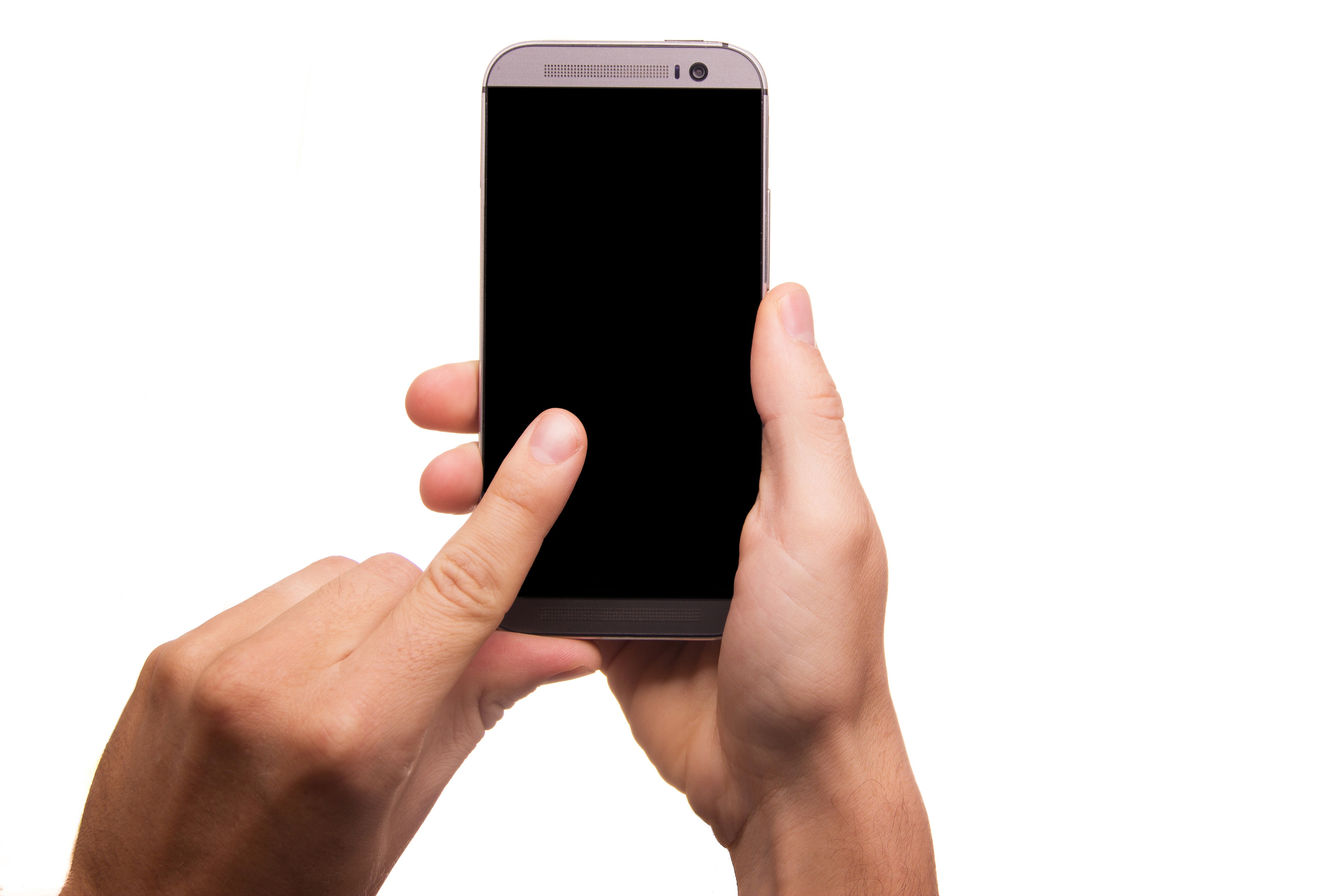
You don't have to go out into public to encounter dirty objects covered in germs. Most people have plenty of surfaces in their own home that accumulate potentially harmful viruses and bacteria.
The dirtiest objects are the ones that tend to get overlooked or ignored when you clean. Most people don't realize how much bacteria everyday things like door handles, keyboards and mouses, and even your own cell phone, can have.
In fact, studies show that most people's cell phones have ten times the amount of bacteria as a typical toilet seat. That's why some experts recommend that you wipe your phone down regularly with an alcohol solution and avoid bringing your phone with you into the bathroom.
The worst surfaces are the ones that tend to get moist or exposed to fecal matter, raw meat, and other food items. These include items and surfaces in your bathroom and kitchen, which tend to accumulate the largest amounts of harmful bacteria.
Here is a list of some of the most commonly overlooked sources of germs in the home (a * indicates especially germy items):
- Cell phones and landline phones *
- Computer keyboards and mouses
- Tv buttons and remote controls
- Fridge and microwave handles
- Microwave buttons
- Light switches
- Purses and bags *
- Video game controllers
- Tooth brush holders
- Faucet handles
- Bathroom sinks *
- Kitchen sinks *
- Kitchen sponges *
- Cutting boards *
- Coffee reservoirs
These are all objects that people tend to skip when doing regular maintenance cleaning in their homes. In order to prevent potentially harmful germs from accumulating, you will probably need to make a special effort to remember to sanitize these surfaces on a regular basis.
You can clean most of these items by wiping them down with a simple all-purpose cleaner or a sanitizing spray. If it is a smooth surface like a doorknob or your kitchen counters, you should let the sanitizing solution sit for a minute or two to get its full sterilizing effects.
Cleaning most of these objects once a week or so should be fine, although you should clean the dirtiest surfaces, like your kitchen counters, much more often. You should also make sure to sanitize anything that comes into contact with lots of bacteria, like your bathroom and kitchen sink, with a stronger sanitizing solution like bleach.
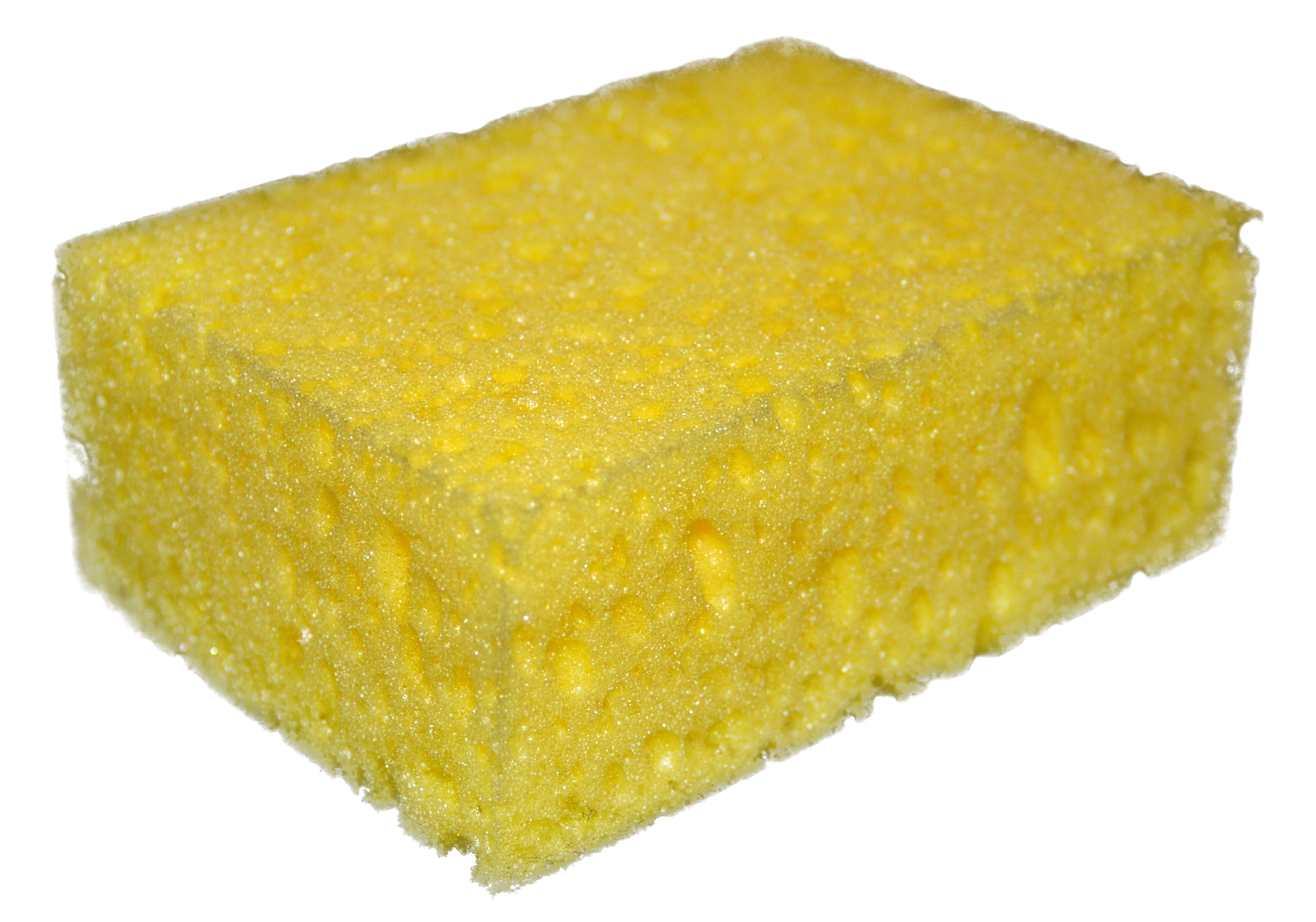
That includes kitchen items like faucets, cleaning rags, and cutting boards, which are particularly likely to carry dangerous bacteria like salmonella and E. coli. Make sure to sanitize these items at least once a week with an effective sanitizing solution.
Kitchen sponges, in particular, hold many times more bacteria than most other things in your home, so you shouldn't use them to wipe down your counters or clean other surfaces. You should also make sure to replace your sponge with a new one once per week, since there is no good way to sanitize a sponge effectively.
Unfortunately, COPD can make it difficult to keep up with cleaning tasks around the house, especially if you suffer from severe symptoms. Consider hiring a housekeeper or recruiting friends and family to help you with the most difficult tasks, that way you can keep up even when you aren't feeling well.
You should also avoid using harsh chemicals like bleach if you have COPD, since breathing in their fumes can irritate your lungs and airways. To reduce the risk, make sure you always use cleaning solutions in a well-ventilated space or have someone else use the more noxious chemicals for you.
Keep Your Medical Equipment Clean

If you use supplemental oxygen, it's important to keep your oxygen equipment clean and hygienic. That means washing your oxygen mask or nasal cannula and replacing your extension tubing, valves, and other components of your oxygen delivery system on a regular basis.
Since you breathe through your oxygen equipment directly, you run a higher risk of getting sick from germs that collect inside the tubing. If you don't clean the tubing and other components thoroughly enough, dangerous pathogens, including bacteria that come from your mouth, can multiply to dangerous levels and infect your lungs when you breathe them in.
That's why, if you use oxygen therapy, cleaning and caring for your oxygen equipment should be at the top of your hygiene priorities. Luckily, it's extremely easy to do and hardly takes any time at all once you know the proper procedure.
How to Clean Your Oxygen Equipment

First of all, you need to clean and sanitize your nasal cannula and/or oxygen mask at least once a week. To do this, you simply need to wash the tubing or mask with warm, soapy water both inside and out to remove any germs, mucus, or grime.
Then, you will need to make up a solution of one part vinegar to ten parts water. This serves as a gentle sanitizing solution for your equipment that won't damage the delicate plastic.
Use this solution to rinse out your nasal cannula and/or oxygen mask before giving them one final rinse with plain, hot water. Then, hang your equipment up on a hook or secure it on a line to allow it to air dry before you use it again.
For this and other reasons, you should always keep at least one extra nasal cannula or oxygen mask around. That way, you can use it as a backup whenever the need arises, including while you wash your other equipment and wait for it to dry.
If you use a humidifier bottle with your oxygen equipment, you should wash it regularly about two to three times a week as well. Simply follow the same procedure you use for your nasal cannula and mask, and be sure to refill the bottle with distilled water instead of water from your tap.
However, you should always check the information that comes with your equipment before attempting to give it a wash. There are many different types of nasal cannulas and oxygen masks, and some have their own special instructions for proper cleaning.
You should not try to clean your extension tubing, because it is difficult to wash and dry safely. Instead, you should replace the tubing every 2-3 months or as soon as you notice it getting worn, stiff, or dirty.

If you use an oxygen concentrator with replaceable filters, make sure to clean and/or replace them as often as the device's instructions recommend. Inspect your filters regularly for damage like fraying or tears, and be sure let them air dry completely after washing before you put them back into the machine.
Take some time about once a week to clean the outside of your oxygen tanks or oxygen concentrator machine as well. To do this, simply wipe down the outside of your oxygen source with a sanitizing wipe or a damp cloth and a bit of soap.
Be careful not to get your oxygen concentrator too damp or spray cleaning solution directly onto the surface. Doing so could affect its sensitive electronics and damage your device.
Finally, make sure you clean any carrying cases or removable accessories like straps that you use with your oxygen equipment. Simply wash them in warm, soapy water and rinse, or follow the instructions that came with the equipment, and allow them to air dry.
When You Should Replace Your Oxygen Equipment
Most pieces of oxygen equipment are made out of soft, flexible plastic tubing. This tubing has a finite lifespan and will break down and degrade over time.
The tubing that makes up your oxygen delivery equipment goes through a lot of wear and tear. The more often you use it, the quicker it will deteriorate and acquire cracks, punctures, and other damage.
Worn-out tubing can be dangerous, because cracks and tears create moist crannies where bacteria and fungus can grow. It can also cause leaks and inefficiencies that make your oxygen therapy less effective.
Because of this, you need to replace your nasal cannula, oxygen mask, and extension tubing on a semi-regular basis. There are some general guidelines for how often to do this, but you should check your equipment regularly for noticeable damage and wear.
Here are som guidelines for when you should replace your oxygen equipment:
- Nasal cannula: replace every 2-4 weeks with frequent use, every 2-4 months if you only use oxygen infrequently (or as indicated on the instruction manual)
- Oxygen mask: replace every two weeks or as indicated on the instruction manual
- Humidifier bottle: replace every few weeks to 3 months as needed
- Extension tubing: replace every 2-6 months or as needed
- Swivel connectors: Replace every 2-6 months or as needed
You should also replace your nasal cannula immediately after recovering from an illness or respiratory infection. That way, you don't re-infect yourself with any germs that are left in the tubing from when you were sick.
For more information about cleaning and replacing your oxygen equipment, visit our complete guide on Oxygen Equipment Cleaning and Maintenance.
Keep Your Clothes Clean
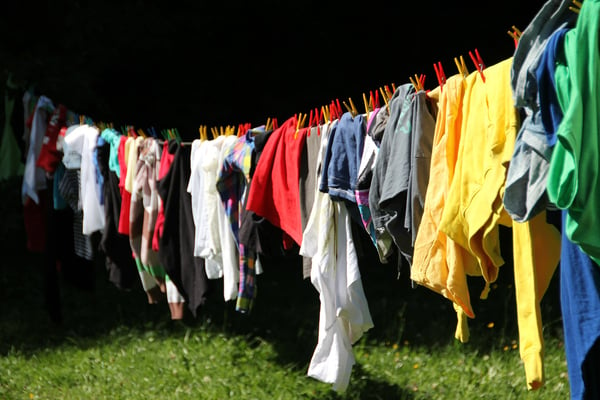
You might be surprised to learn that your clothes can harbor harmful bacteria like salmonella. That's why it's important to keep your clothes clean and put fresh clothing on every day.
You should change and wash your underclothes more often than your outer layer of clothes since they tend to absorb the most sweat and bacteria. Outer layers of clothing that don't come into much direct contact with your skin can be used for longer in-between washes.
In general, you should wash a piece of outer clothing if you have worn it for more than one or two days. Underwear, however, should always be washed after a single use.
In order to wash your clothes properly, you need to use clean water and a detergent. You can wash your clothes in a washing machine or do it yourself by hand, as long as the clothes get adequately agitated and scrubbed.
After washing, make sure the clothes get a thorough rinse to remove all of the detergent. Then, get rid of any extra moisture and dry each item on a clothesline or in a dryer.
It's important to make sure that your clothes dry out quickly and thoroughly so they don't grow mold. Smell your clothes before you put them away and give them another wash with some vinegar if you notice that any of them have moldy or musty smell.
Bath towels are also in danger of harboring bacteria and fungi when they are damp. To prevent microbes from growing, make sure to hang your towel in a place where it can dry quickly after your shower and wash your towel at least once a week.
Here is a list of some other clothing items that you should take care to wash thoroughly and often:
- Athletic clothes
- Bath towels and hand towels
- Bedsheets and pillowcases (wash at least once per week)
- Clothes worn during food prep (especially when handling raw meats)
- Clothes soiled with vomit or feces
- Clothing that has come in contact with a wound or infection
- Clothing you wear when you are sick
- Clothing you wear when cleaning, gardening, or doing other tasks that can soil your clothes
Conclusion
Good hygiene could mean the difference between living a long, good quality life, and being doomed to a shortened life because of illness or infection. That's why good hygiene should be a top daily priority if you suffer from COPD.
It's surprisingly easy to get lazy or forget the proper steps for good hygiene, which is why it's important to give yourself a refresher on how to do it right. Luckily, if you follow the tips and tricks in this article, you will be well on your way to practicing proper, effective personal hygiene.
The difficult part for many people is remembering to practice good hygiene consistently every day. But if you start as soon as possible and put in the work to build good habits, you'll find that personal hygiene becomes a much more natural and manageable part of your daily routine.


.png)




